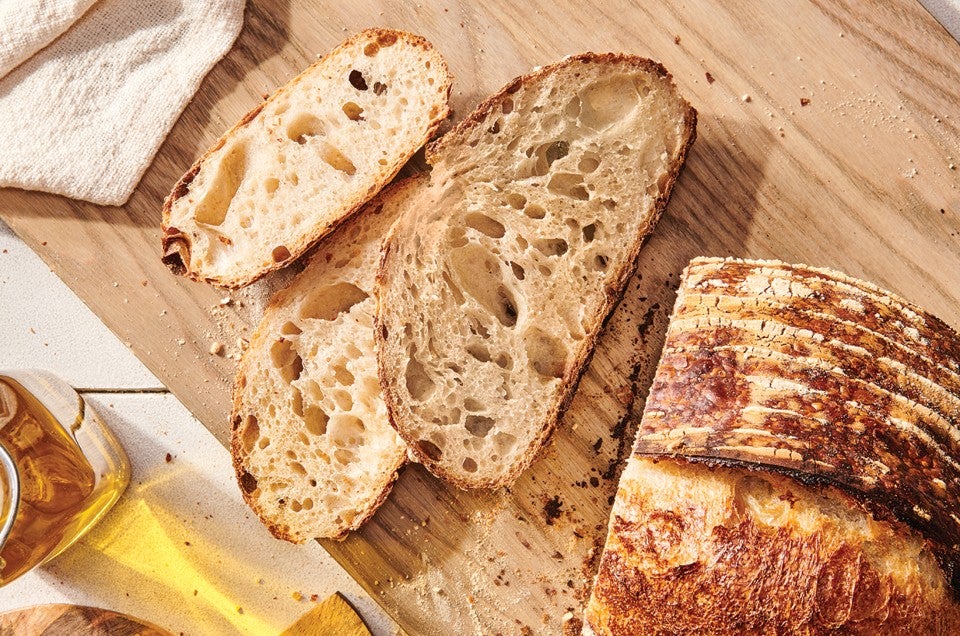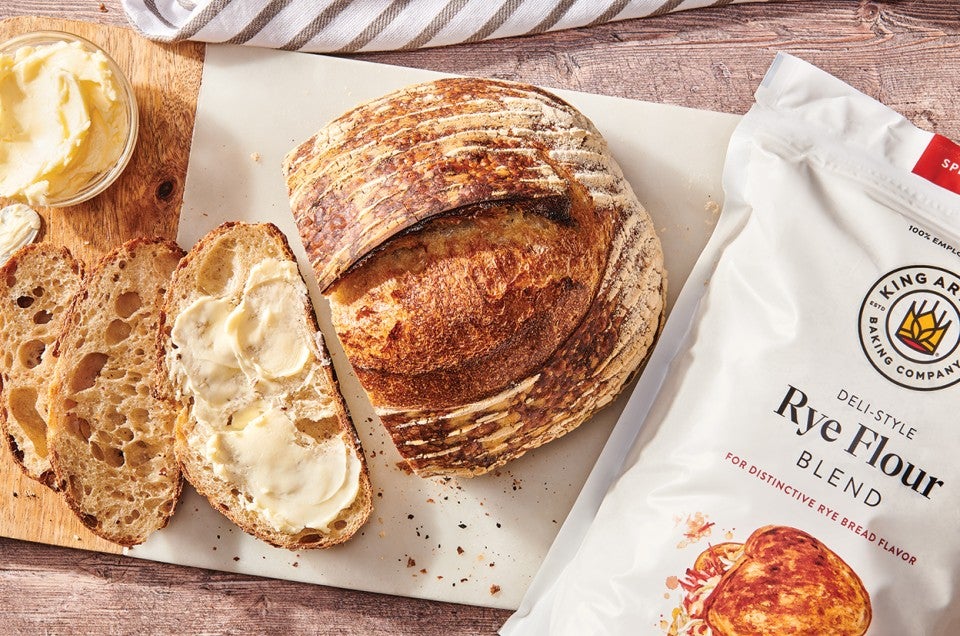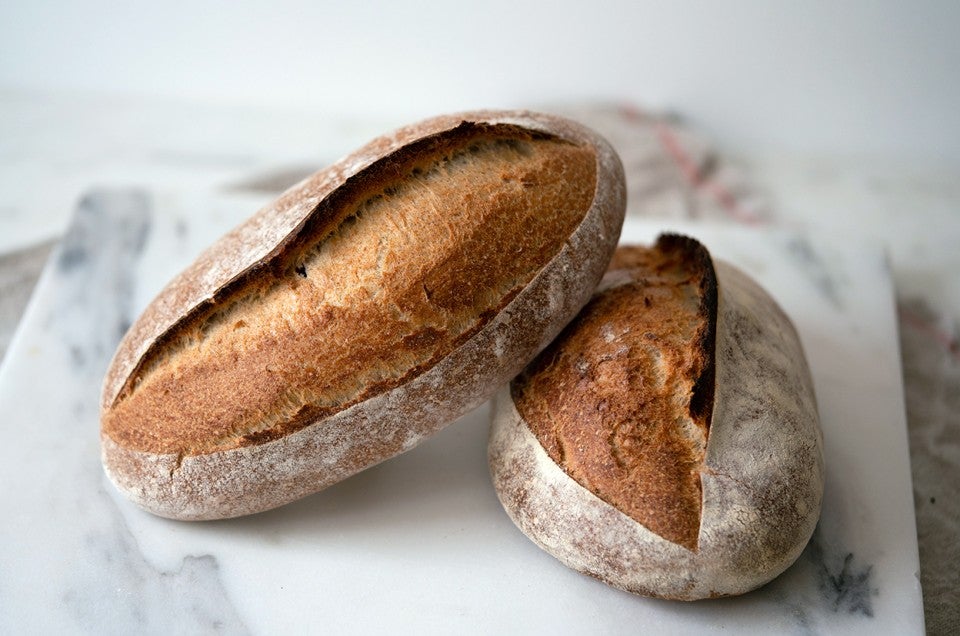Vermont Sourdough
Take a bite of this crusty-chewy bread: its rich flavor builds as you savor its perfect tang. The soft interior and open crumb make it perfect for both sandwiches and toast.

Take a bite of this crusty-chewy bread: its rich flavor builds as you savor its perfect tang. The soft interior and open crumb make it perfect for both sandwiches and toast.









To make the liquid levain starter: Mix all of the ingredients in a medium-sized mixing bowl, or the bowl of a stand mixer. Cover and let sit for 12 to 16 hours at room temperature. The mixture should bubble and expand.
To make the dough: Add all of the dough ingredients (except the salt) to the bowl with the levain. Mix briefly, just to combine. If you’re using a stand mixer, use the dough hook on first speed, mixing just until everything is incorporated.
Cover the dough and let it rest for 20 to 30 minutes. This resting period is known as the autolyse, and gives the flour a chance to absorb the water, making the resulting dough easier to work with.
Sprinkle the salt over the dough. Mix it in and continue to mix for several minutes. The dough won’t be smooth and elastic, but it should be cohesive and starting to feel a bit springy. Using a stand mixer and dough hook at medium speed this will take about 2 to 3 minutes.
Cover the bowl with plastic wrap or a reusable cover and let it rest and rise for 1 hour.
After 1 hour uncover the bowl and, using a bowl scraper or spatula, run the scraper or spatula down the inside far wall of the bowl. Bring the dough up from the bottom of the bowl, and fold it over on top of itself. Turn the bowl 90° and repeat; repeat twice more (for a total of four times), turning the bowl 90° each time. This process, which helps develop the dough, is called a fold. Re-cover the bowl, and let the dough rise for another 90 minutes, adding another fold after 45 minutes if the dough doesn’t seem elastic and strong enough.
Gently deflate the dough and divide it into two pieces; each will weigh about 750g. Shape each piece into a rough ball, cover, and let rest for about 20 minutes; this rest will make the loaves easier to shape.
After the rest, shape the two pieces of dough into rounds or oblong loaves. Place them on a piece of parchment or a lightly greased baking sheet. If the dough seems very soft, for added support turn the loaves (seam side up) into two floured brotforms, or into two bowls lined with floured smooth cotton dish towels.
Cover the loaves and let them rise for 1 1/2 to 2 hours at room temperature (68°F to 78°F is ideal). Or refrigerate the covered loaves overnight.
When you’re ready to bake, preheat the oven to 450°F for at least 45 minutes before baking. At the same time, place two lidded oven-safe baking pans (such as a cloche, Dutch oven, or long covered baker) into the oven to preheat. Make sure the baker you choose is safe to be preheated empty, without anything inside.
When the oven is fully preheated, carefully transfer the loaves to your chosen bakers. Slash them several times across the top to allow for expansion.
Cover the bakers and place them in the oven. Bake the bread for 30 minutes. Remove the covers and bake 10 to 15 minutes more, or until the bread is golden brown. Its internal temperature should register about 210°F on a digital thermometer.
Remove the bread from the oven and turn it out of the pans onto a rack to cool completely.
Store the bread at room temperature, loosely wrapped, for up to 5 days; freeze for longer storage.
Join master baker Jeffrey Hamelman as he demonstrates how to make Vermont Sourdough from start to finish. Watch Episode 3 of the Isolation Baking Show now.

View our privacy policy

